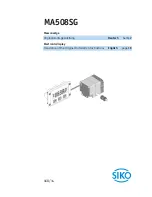
1
Input
Hall Effect Module
Reporting & Outputs
Reporting
Tank level (5% variation)
Low battery
High/excessive draw
Fill detection
Temperature
Data Interface
API
Email (to supplier and/or consumer)
Raw data
Online dashboard
Client mobile app
Automated Testing
Network status
Lead sensor status
Battery status
Electrical Specifications
Battery Pack
3.0V 1.6Ah
Radio Specifications
Technologies
Tank Monitor: LTE-M (NB-IoT coming soon)
Sensor: Bluetooth LE
Frequency range
2400 -2483.5 MHz
Measured output power
4 mW
Environmental Specifications
Operating & storage
temp. range
-40�C to 60�C -40�F to 140�F
Relative humidity range
0% to 100%
Enclosure rating
IP68
Warranty
5+ years
Certifications
FCC ID:
2ADQFBEDHT
IC Registration number:
12649A-BEDHT
Dimensions
Height
5.12 cm
2 in
Width
5.36 cm
2.11 in
Depth
4.81 cm
1.9 in
Option
GPS (mobile tank)
Ordering
Otodata Wireless Bluetooth Monitor and
Granby Home Heating Oil Adapter (order
float and magnet separately if required)
(Change CNEE for client's branding code
if availabe).
TM5030BG-VA00-CNEE-GA3020
Float 24" height
ACGF24
Float 28" height
ACGF28
Float 44" height
ACGF44
Float 46" height
ACGF46
Combo float 24" and alarm
ACGCAG24
Combo float 28" and alarm
ACGCAG28
Combo float 44" and alarm
ACGCAG44
Magnet indicator for float gauge
ACOTOGBM01
Specifications
A home heat monitor to suit your
corporate needs.
FCC Warning Statement
This device complies with part 15 of the FCC rules of operation is subject to the following two conditions:
1) This device may not cause harmful interference and
2) this device must accept any interference received, including interference that may cause undesired operation.
FCC Compliance Statement
This equipment has been tested and found to comply with the limits for a Class B digital device, pursuant to part 15 of the FCC Rules.
These limits are designed to provide reasonable protection against harmful interference in a residential installation.
This equipment generates, uses and can radiate radio frequency energy and, if not installed and used in accordance with the instructions, may cause harmful interference to radio communications. However, there is no guarantee that interference will
not occur in a particular installation. If this equipment does cause harmful interference to radio or television reception, which can be determined by turning the equipment off and on, the user is encouraged to try to correct the interference by one or
more of the following measures:
- Reorient or relocate the receiving antenna.
- Increase the separation between the equipment and receiver.
- Connect the equipment into an outlet on a circuit different from that to































